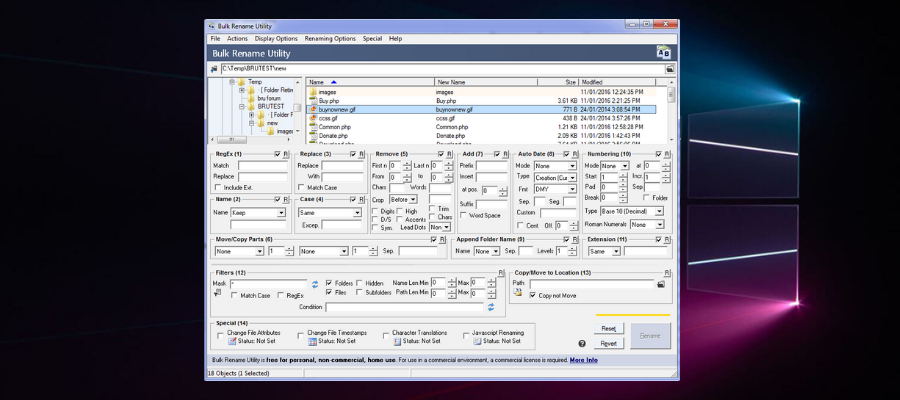

The working mode is set to Files Only so only files will be renamed. The first step to batch recursive renaming is to select the folder which you wish to rename recursively, this is done by simply selecting the folder in Quick File Rename, then by clicking on the Add SubFolders button. Once you have downloaded the software, view the videos for a quick introduction on how to use this incredibly useful software. If you have not downloaded Quick File Rename, get it now. After installing the tool, launch it, navigate to the files and folders you want to rename, and select them. Put the files and folders you want to rename into one folder. One of the best bulk rename utility tools, the File Renamer Basic is a perfect renamer tool that you can use to rename entire directories and subdirectories. You can also watch the batch recursive rename video. Download the Bulk Rename Utility from here. And if you want to rename files in more than one folder you can rename recursively down. This tutorial will show you how to perform batch recursive rename using the Quick File Rename application. To rename multiple files is now as simple as select and rename. Quick File Rename's unique renaming Rules model allows you to perform complicated renaming steps, so you can manipulate names any way you wish. There are two ways of performing recursive rename in Quick File Rename, you can use the command line utility or the application itself. With recursive renaming you can rename all files and folders in your directories.

After which we have a new variable called newName which can then be used to. Quick File Rename allows you to perform batch recursive rename easily. To perform the actual file rename we use replace once we have done a getName. Using Quick File Rename, the #1 file renamer


 0 kommentar(er)
0 kommentar(er)
